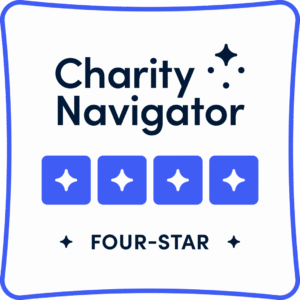Dunwoody Nature Center believes and acknowledges that children are complex beings, with complex needs. We approach each child with care, curiosity and concern, but we also acknowledge that Forest School is not necessarily the best fit for all children. We reserve the right to pause enrollment at any point during the school year. A pause in enrollment can occur for any number of reasons, but common reasons include observable patterns of detrimental behavior, displays of complex trauma behaviors, and academic interventions beyond the scope of our learning framework.
The following protocols are by no means exclusive, and will be taken on a case by case basis with parental, teacher, and administrative involvement.
PLEASE NOTE: THERE IS A WAIVER BELOW CONFIRMING YOUR UNDERSTANDING OR THE FOLLOWING BEHAVIOR GUIDELINES. THIS MUST BE SUBMITTED.
What is considered disruptive behavior?
- Requiring constant attention from the staff
- Inflicting physical or emotional harm on other children, adults, or self
- Disrespect people and materials provided in the program
- Consistently disobey the class rules
- Consistently fail to follow teacher instructions
- Verbally or physically threaten or harm other students and/or staff
- Use inappropriate or offensive words repeatedly
Navigating Disruptive Behaviors at Forest School
Oakwood Forest School believes that our immersive forest environment is a natural guide for growth and learning. We encourage and support children’s innate ability to express deep compassion and concern for themselves, others and their environment as they’re learning to be good humans. We believe that the forest invites us to practice empathy, self-regulation, and consideration of others.
Below are some strategies teachers use to help students experiencing conflict or exhibiting consistently disruptive behaviors in order to help them thrive in the outdoor learning environment:
-
Establish a strong classroom culture to start the year so all children feel safe to learn, explore, and express themselves freely
-
Teaching and modeling our three kindness rules each day:
-
-
-
I will be kind to nature
-
I will be kind to others
-
I will be kind to myself
-
Give children space and support in their attempts to settle their own disputes
-
Encourage children to communicate through disagreements and conflicts with another child, often peace-making in a group with teacher guidance
-
Redirect behaviors if this seems potentially effective
-
Counsel children individually about their behaviors and choices
-
Separate a child from the group and utilizing calming strategies (sit spot, grounding, leaf breathing, anchoring, etc.) to help the student regulate
-
Work with parents to ensure children are well-rested, well-fed and comfortable in their forest classroom
-
Address group dynamics as a whole class, making sure each child’s voice and opinion is heard and valued
-
If conflict arises for younger students:
-
-
-
Quietly observe with open, non-judgmental attitude
-
Move closer to conflict at eye-level with the students
-
Describe what’s happening out loud in simple language
-
Acknowledge feelings/experiences of all children involved
-
Lead with empathy, redirecting if needed and remaining available to observe, comfort and model gentleness until students disengage
Teachers will make parents aware of any disciplinary concerns through ongoing conversation and then with Behavior and Incident Reports and calls or meetings with the teaching team as required.
Patterns of Detrimental or Disruptive Behavior
Oakwood Forest School has a zero tolerance policy for bullying, coercion, hitting, grabbing, pushing, verbal harassment, aggressiveness or any other demeaning or detrimental behavior. If these behaviors occur, the teacher will separate the instigating child from the group and the following steps will be taken to ensure the safety of all students and staff in class.
Step One Incident/Behavior Report
Detrimental behaviors will be addressed in a behavior and/or incident report. This will be completed by a teacher to document inappropriate behaviors that directly and negatively impacted other children, staff members, or the group as a whole. This report will be shared with the parent and will explain the behavior and how the behavior has affected others. It will also explain how the situation was resolved. The incident report will be given to the parent at the end of the day to be signed and a brief discussion will take place between the parent and teacher to discuss how to address the behavior at school and at home.
Step Two Incident Report and Parent Call
If two behavior/incident reports are written regarding the same inappropriate behavior documenting that the child has difficulty managing his/her behavior on a recurring basis, parents will be asked to keep the child home for one school day to address the behavior at home. A member of the administration team will then call the parent to discuss how to best help the student manage the detrimental behavior and offer support and tools so that the teaching team and parents can be a united front for the student.
Step Three Incident Report & Meet with Teachers & Admin about Enrollment Pause
If the concerning behavior does not improve and another incident report is written regarding the same behavior, parents will be asked to meet with the child’s teacher and a member of the admin team to discuss a pause in the child’s enrollment and construct a learning plan for the child’s return to school. Pauses in enrollment are discussed as a teacher, admin and parent team to ensure the success of each student. The steps for enrollment pauses are outlined on a case by case scenario to accommodate the unique needs of the student.
Academic Pauses in Enrollment
The first six weeks of school are critical in assessing a student’s comprehension of curriculum, social emotional learning and awareness. Oakwood Forest School understands that some students may need additional resources and learning support in order to be successful learners. If learning differences, special needs or necessary additional resources are identified in the first six weeks of school that fall outside of the learning framework of Oakwood Forest School the following steps will be taken to ensure the success of the student.
Step One Teacher, Admin, & Parent Meeting
Parents will be asked to meet with the student’s teacher and a member of the administration team to discuss the learning differences and special needs identified within the first six weeks of school. A learning success plan will be established and resources available at Oakwood Forest School will be outlined to help the student, teachers and parents work together for the success of the student.
Step Two Enrollment Pause
If the learning plan established by the teachers in the teacher meeting doesn’t prove to be effective for the student’s success, an enrollment pause will be discussed with parents to allow time for the student to receive psycho-educational testing to determine the specific and unique learning needs of the child. Once testing by a licensed therapist has been completed, the results of the test and diagnosis will be shared with the student’s teachers and admin and a meeting will be set up to discuss a reintegration learning plan for the success of the student.
Step Three Reintegration
The student’s parents, teachers and a member of the admin team will meet to review the test results, discuss reintegration into class and establish a learning plan to ensure the student’s success at Oakwood Forest School. Oakwood Forest School teachers and administration know that a forest school might be the best fit for every student and that the learning framework may not be able to meet the needs of each student. If this is the case, the meeting to discuss reintegration may be a meeting to discuss better learning resources and environments for the students to help them on their learning journey.
Conditional Enrollment
Parents of students with identified learning differences, therapeutic assessments, previous psycho-educational testing, IEP and 504 services, or other special needs before the school year begins will be asked to provide any and all documentation of services and diagnosis received. The admin team and the student’s teaching team will review the documentation and discuss the necessity of setting up a meeting before the school year begins to establish a learning success plan for the student. Teachers will then observe the student in class for the first six weeks of school and regularly discuss their academic progress and social-emotional learning.
After the first six weeks or at the teacher’s discretion, a meeting will be scheduled to reevaluate the learning success plan and discuss any additional resources necessary to meet the student’s unique and specific learning needs. Oakwood Forest School teachers and administration know that a forest school environment might not be the best fit for every student and that the learning framework may not be able to meet student needs. If this is the case, the six week meeting may necessitate a discussion about more appropriate learning resources and environments for the students to help them on their learning journey.







